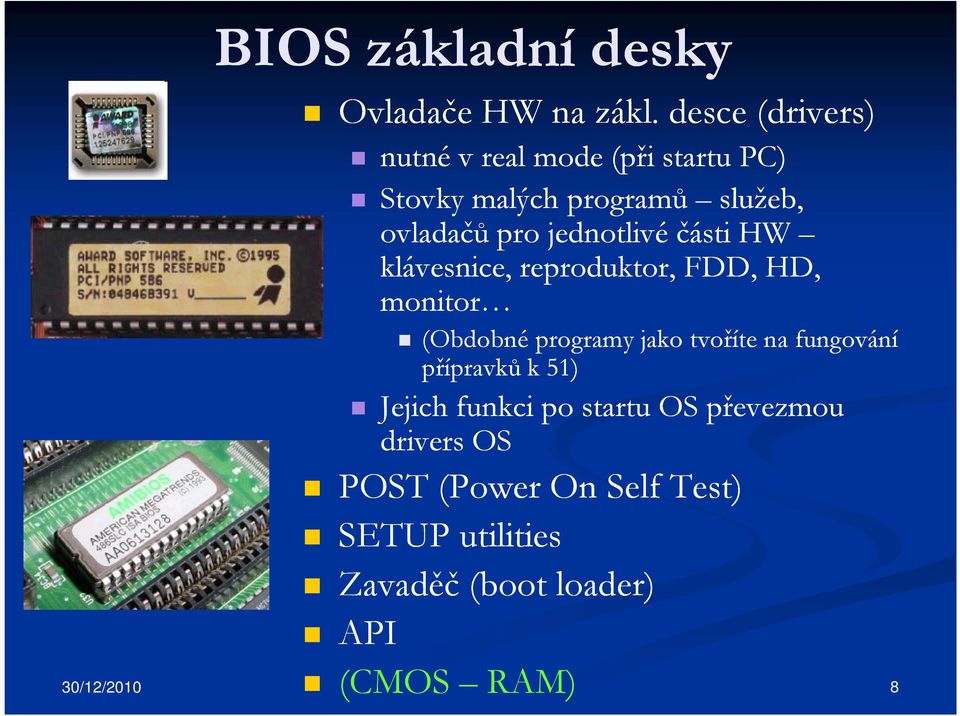Hi, In my job all the Computer boot from net using PXE. All new motherboards included lan on board, but the current bios that came inside with this motherboards include a old version of Lan drivers, and the Old driver for Lan module do not work very well with us Switches. Six months ago, I modify 2 bios and change the lan module for other more new. This Bios works fine.
AMIBIOS8 Utilities User Guide Control Help String This area displays the help string for individual. AMI Flasher is a utility program that helps you to update your BIOS.
Now I must edit a ASRock BIOS, the model is P4VM800. And the Bios Version is AmiBios8. Later, I was used AMIBCP 7.5 and CBROM. But for editing AmiBios 8 i law that for edit amibios modules i need Visual eBios, becouse the amibcp 2.43 can not edit modules. I looking in all the forum but nothing have Visual eBios, and my question is. It´s posible download this program from some site? It´s posible modify this bios with other program??
I install a linux program called amidec, and this program could extract all modules from amibios8. But, could not compress all the modules into a.rom Please, tech me as i can edit amibios8 modules. Thanks in advance. And sorry for my English, is not my native language. Luciano Giacchetta. Install gvlk key kmspico activator 2016.

Number of employees 1000+ worldwide Website American Megatrends Incorporated ( AMI) is an American and company, specializing in hardware. The company was founded in 1985. Shankar was appointed chairman and president in 2011. It is headquartered in Building 200 at 5555 Oakbrook Parkway in,,, near the city of, and in the. The company started as a manufacturer of complete, positioning itself in the high-end segment. Its first customer was PCs Ltd, later known as Computers, making one of the first designs. As hardware activity moved progressively to -based, AMI continued to develop BIOS firmware for major motherboard manufacturers.

The company produced BIOS software for motherboards (1986), server motherboards (1992), storage (1995) and remote-management cards (1998). In 1993 AMI produced MegaRAID, a storage which major (including HP and Dell) adopted.
AMI sold its RAID-division assets to in 2001. As of 2011 AMI continued to focus on OEM business and technology. Its product line includes AMIBIOS (a ), Aptio (a successor to AMIBIOS8 based on the standard), diagnostic software, remote-access firmware, motherboards, backplane controllers, driver/firmware development, service processors, iNAS and SAN storage systems for, and 'solutions' for the operating system. Contents • • • • • • • • • • • • Products [ ] AMIBIOS [ ] Table of diagnostic beep codes compiled by AMI BIOS during Number of beeps Meaning 1 Power-on self test successful 2 Parity error in the first 64 of RAM 3 Memory failure in the first 64 KiB of RAM 4 Same as 3, but also including a non-functional timer 1 5 CPU error 6 Error in the on the 8042 keyboard controller chip 7 Generation of a CPU virtual mode exception signifying an error 8 Read/write error when accessing system 9 Mismatch between the calculated checksum of the ROM firmware and the expected value hardcoded into the firmware. 10 Read/write error for the CMOS NVRAM shutdown register 11 A fault in the AMIBIOS (also written as AMI BIOS) is the -compatible developed and sold by American Megatrends since 1986. As of 1994, the company claimed that 75% of used the AMIBIOS.
It is used on made by AMI and by other companies. A chip containing an old version AMIBIOS image, pulled from an ECS motherboard American Megatrends has a strict OEM business model for AMIBIOS: it sells source code to motherboard manufacturers or customizes AMIBIOS for each OEM individually, whichever business model they require. AMI does not sell to end users, and itself produces no end-user documentation or technical support for its BIOS firmware, leaving that to licensees. However, the company published two books on its BIOS in 1993 and 1994, (listed in ), written by its engineers. During powerup, the BIOS firmware displays an ID string in the lower-left-hand corner of the screen.
This ID string comprises various pieces of information about the firmware, including when it was compiled, what configuration options were selected, the OEM license code, and the targeted chipset and motherboard. There are 3 ID string formats, the first for older AMIBIOS, and the second and third for the newer AMI Hi-Flex ('high flexibility') BIOS.
These latter are displayed when the Insert key is pressed during power-on self-test. The original AMI BIOS did not encrypt the machine startup password, which it stored in non-volatile RAM.